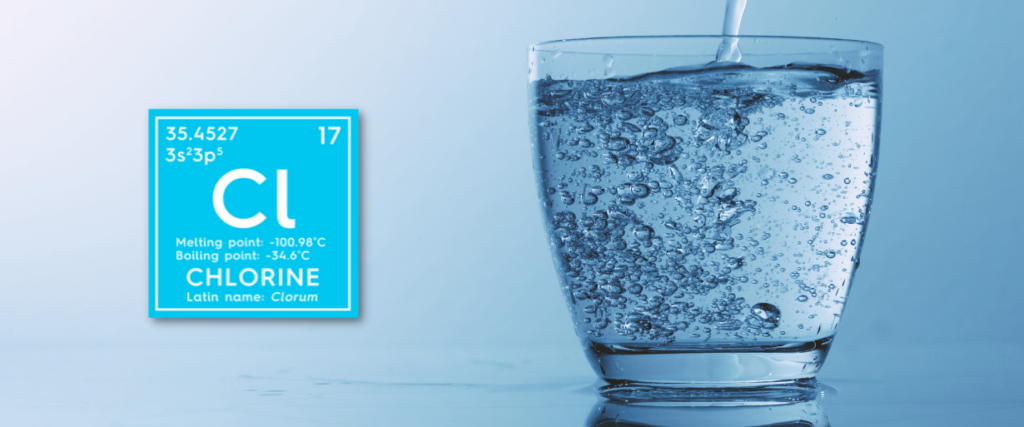The Hidden Dangers of Chlorine By-Products in Treated Water
By Finlay Gilkinson – 17/03/2025
Chlorine has long been the standard disinfectant used in municipal water treatment to eliminate harmful bacteria, viruses, and other pathogens. While effective in making water safe from infectious diseases, chlorine itself can lead to unintended health risks when it reacts with organic matter naturally present in water sources. This reaction produces a group of chemicals known as disinfection by-products (DBPs), which pose potential long-term health concerns.

What Are Chlorine By-Products?
When chlorine is added to water, it interacts with organic materials such as decaying plant matter, algae, and even pollutants. This chemical reaction forms a variety of DBPs, including:
Risks of Chlorine by-products in Treated Water
Research has raised concerns about the potential health risks associated with long-term exposure to DBPs, primarily through drinking water and inhalation (such as from steam in showers). Some of the major risks include:
1. Increased Cancer Risk
Numerous epidemiological studies have linked DBP exposure to an increased risk of bladder cancer. The U.S. Environmental Protection Agency (EPA) has classified some THMs and HAAs as possible human carcinogens due to their mutagenic and DNA-damaging properties.
2. Reproductive and Developmental Issues
DBPs, particularly HAAs, have been associated with reproductive problems, including lower birth weights, congenital disabilities, and an increased risk of miscarriage. Some studies suggest that pregnant women exposed to high levels of DBPs through drinking water may have a higher likelihood of adverse birth outcomes.
3. Hormonal and Endocrine Disruption
Chlorinated by-products like chlorate and perchlorate can interfere with thyroid function by disrupting iodine absorption, which is critical for hormone production. This can lead to metabolic disturbances and developmental issues, especially in infants and young children.
4. Respiratory and Skin Irritation
Exposure to DBPs is not limited to ingestion. Taking hot showers or using treated water in swimming pools can lead to inhalation or dermal absorption of THMs. These exposures have been linked to respiratory issues, skin irritation, and even asthma-like symptoms in sensitive individuals.
How to Reduce Exposure to Chlorine By-Products
Although it is difficult to eliminate DBPs from municipal water systems entirely, there are steps individuals can take to minimize exposure:
Conclusion
Chlorine has played an essential role in ensuring safe drinking water, but its by-products come with potential health risks that shouldn’t be overlooked. As research continues to uncover the long-term effects of DBP exposure, it is crucial to stay informed and take proactive steps to limit ingestion and inhalation of these potentially harmful compounds. Investing in proper water filtration and advocating for improved municipal water treatment strategies can go a long way in ensuring safer drinking water for future generations.
Ready to find the perfect job?
Our team of experts work with an extensive network of employers. Submit your CV to ensure you’re a part of our network of talented candidates and we’ll make you aware of opportunities before they are even posted.
